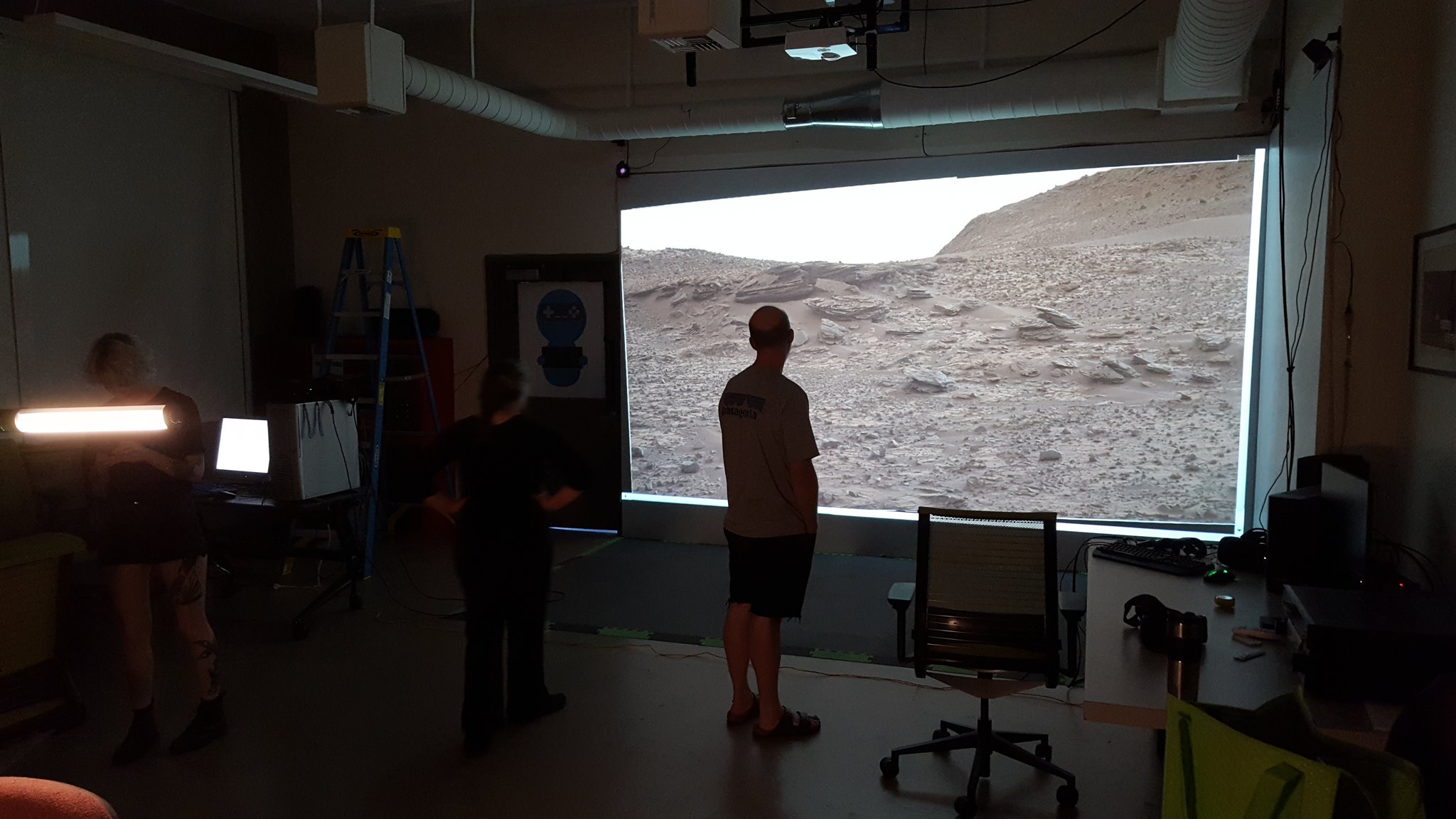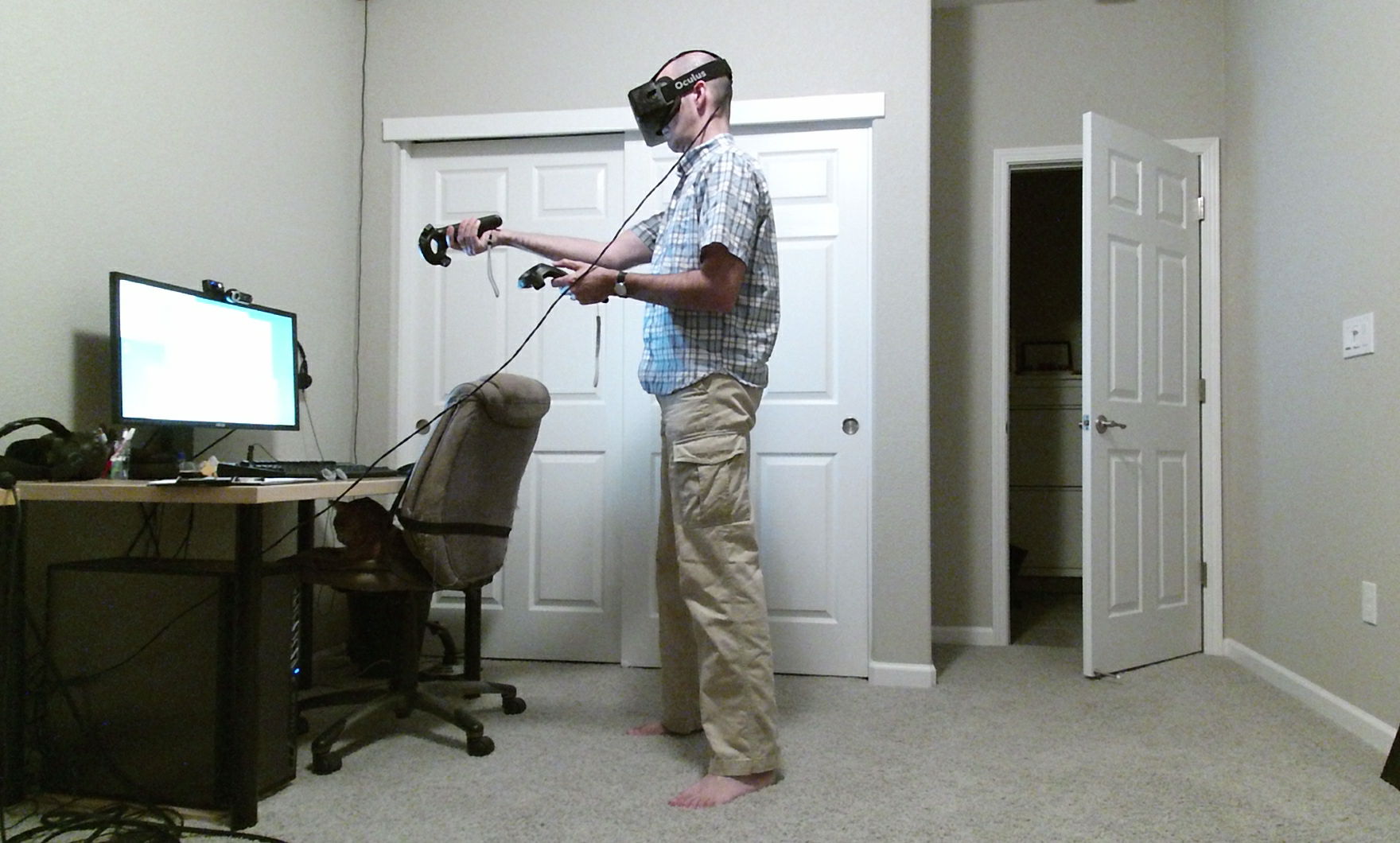Last weekend, we had yet another professional film crew visiting us to shoot video about our involvement in NASA’s still on-going Mars Science Laboratory (MSL, aka Curiosity rover) mission. This time, they were here to film parts of an upcoming 90-minute special about Mars exploration for the National Geographic TV channel. Like last time, the “star” of the show was Dawn Sumner, faculty in the UC Davis Department of Earth and Planetary Sciences, one of the founding members of KeckCAVES, and member of the MSL science team.
Unlike last time, we did not film in the KeckCAVES facility itself (due to the demise of our CAVE), but in the UC Davis ModLab. ModLab is part of an entirely different unit — UC Davis’s Digital Humanities initiative — but we are working closely with them on VR development, they have a nice VR environment consisting of two HTC Vive headsets and a large 4.2m x 2.4m screen with a ceiling-mounted ultra-short throw projector (see Figure 1), their VR hardware is running our VR software, and they were kind enough to let us use their space.

Figure 1: Preparation for filming in UC Davis’s ModLab, showing its 4.2m x 2.4m front-projected screen and ceiling-mounted ultra-short throw projector, and two Lighthouse base stations.
The fundamental idea here was to use several 3D models, created or reconstructed from real data sent back either by satellites orbiting Mars or by the Curiosity rover itself, as backdrops to let Dawn talk about the goals and results of the MSL mission, and her personal involvement in it. Figure 1 shows a backdrop in the real sense of the word, i.e., a 2D picture (a photo taken by Curiosity’s mast camera) with someone standing in front of it, but that was not the idea here (we didn’t end up using that photo). Instead, Dawn was talking while wearing a VR headset and interacting with the 3D models she was talking about, with a secondary view of the virtual world, from the point of view of the film camera, shown on the big screen behind her. More on that later. Continue reading



